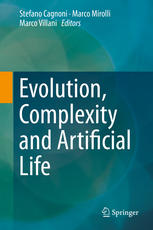

Most ebook files are in PDF format, so you can easily read them using various software such as Foxit Reader or directly on the Google Chrome browser.
Some ebook files are released by publishers in other formats such as .awz, .mobi, .epub, .fb2, etc. You may need to install specific software to read these formats on mobile/PC, such as Calibre.
Please read the tutorial at this link: https://ebookbell.com/faq
We offer FREE conversion to the popular formats you request; however, this may take some time. Therefore, right after payment, please email us, and we will try to provide the service as quickly as possible.
For some exceptional file formats or broken links (if any), please refrain from opening any disputes. Instead, email us first, and we will try to assist within a maximum of 6 hours.
EbookBell Team

5.0
18 reviewsTraditionally, artificial evolution, complex systems, and artificial life were separate fields, with their own research communities, but we are now seeing increased engagement and hybridization. Evolution and complexity characterize biological life but they also permeate artificial life, through direct modeling of biological processes and the creation of populations of interacting entities from which complex behaviors can emerge and evolve. This latter consideration also indicates the breadth of the related topics of interest, and of the different study viewpoints, ranging from purely scientific and exploratory approaches aimed at verifying biological theories to technology-focused applied research aimed at solving difficult real-world problems.
This edited book is structured into sections on research issues, biological modeling, mind and society, applications, and evolution. The contributing authors are among the leading scientists in these fields, and their chapters describe interesting ideas and results in topics such as artefacts, evolutionary dynamics, gene regulatory networks, biological modeling, cell differentiation, chemical communication, cumulative learning, embodied agents, cultural evolution, an a-life approach to games, nanoscale search by molecular spiders, using genetic programming for disease survival prediction, a neuroevolutionary approach to electrocardiography, trust-adaptive grid computing, detecting cheating bots in online games, distribution search in evolutionary multiobjective optimization, and differential evolution implemented on multicore CPUs.
The book will be of interest to researchers in the fields of artificial intelligence, artificial life, and computational intelligence.